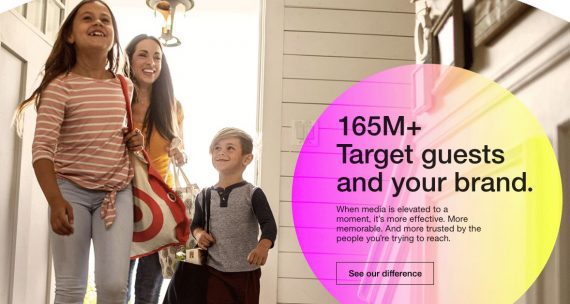Retail media is one of ecommerce marketing’s hottest trends. Example platforms include Amazon Ads, Walmart Connect, Target Roundel, Home Depot Retail Media+, and many more. Some in the industry see retail media as a sure vehicle for sales and profits. But not every advertiser experiences success.
Most of the failures in my experience result from one of five missteps: selecting the wrong audience, unclear messaging, poor optimization, insufficient investment, and unrealistic expectations.
Let’s consider each in turn.

Target’s Roundel platform is one of many retail media advertising options.
Wrong Audience
Focusing on the right audience is crucial for any successful advertising campaign, and retail media is no exception. The audience is the first thing to examine for failing campaigns.
Revisit your customer personas and ensure that the retail media platforms you’ve selected cater to that demographic.
Consider narrowing your campaign to a niche. Testing other retail media platforms or adjusting customer targets can make sense. Merchants often think their products appeal to everyone when most shoppers don’t care. An example is sustainable products. Only a small percentage of consumers consider sustainability when evaluating purchases, but those that do are passionate.
Bad Messaging
Shoppers need to know what they are buying and why. If your retail media ads aren’t resonating with target customers, the issue could be bad messaging.
To improve, focus on delivering a clear, concise, and persuasive message highlighting your product’s unique selling proposition. Emphasize function over form. It is far more important to convey a product’s value than worry about having nuanced or sophisticated branding.
Poor Optimization
Retail media campaigns often take time to optimize — gather data and insights — to achieve their full potential.
Retail media platforms use optimization algorithms. They also show ads to the same shoppers repeatedly. Modern marketers tend to forget the repetition required to reach a would-be buyer. A common default for retail media platforms is to show an ad to a shopper as many as seven times in a single day or even a single session. It takes time, in other words, for these platforms to deliver.
But don’t sit passively. Regularly monitor campaigns’ performance metrics, including click and conversion rates, cost per acquisition, and return on ad spend. Leverage those insights for data-driven adjustments, focusing on potential improvement areas. Be patient and give Amazon and other platforms enough time to work on your behalf.
Inadequate Investment
Underinvestment in retail media campaigns (especially for testing) can impair performance. Insufficient spend can restrict a campaign’s reach, visibility, and effectiveness.
Reevaluate budget allocations, assessing platform fees, ad placement costs, and potential return on investment. Consider investing in advanced targeting tools, analytics services, and creative resources to enhance campaign effectiveness. Allocating adequate funds to retail media campaigns can significantly improve results.
Unrealistic Expectations
Unrealistic expectations for retail media campaigns lead to disappointment. Despite the hype, retail media is no panacea — and neither is any other marketing vehicle.
Set achievable goals based on your budget, historical results, and industry benchmarks. If a campaign fails its targets, set more realistic expectations.
Success in retail media requires a combination of strategic planning, patience, and ongoing optimization. Realistic goals and ongoing campaign refinements are essential for long-term performance.




